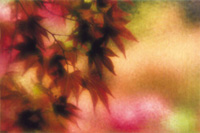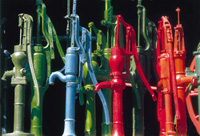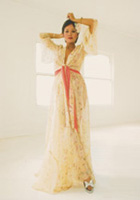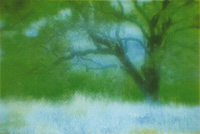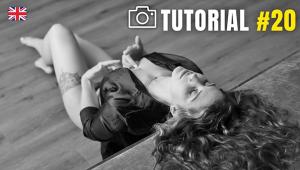The Epson Stylus Photo 1280 Printer
Over the last few years the technology performance advances Epson has brought to ink jet photo printing has moved at an amazing pace. I've not just wondered how they have been able to improve photo-realistic printing so dramatically, but now, with little competitive pressure behind them, why they continue to bring photographers new levels of performance at such a rapid and remarkable pace? Maybe because they can? However, this latest 1280 model Epson Stylus Photo and the smaller 890, were spurred on, I am sure, by the dye stability problems they had for a time with the Premium Glossy paper with the 1270/870 models. That has been corrected and is well behind us. This newest Epson Photo printer offers a significantly better quality and a greater range of print performance. They also have brought out new photographer-friendly paper sizes like 5x7, 8x10, and 11x14, in addition to two new paper surfaces introduced with the Stylus Photo 2000P, Premium Semi-Gloss and Luster, now for the 1280/890. And for the budget minded, entry-level digital photographer, there is a new low-cost member of the Stylus Photo family, the letter-size 780. |
|||
Model Improvements In addition to reformulating the Premium Glossy paper to resolve the light fastness and gas fastness (susceptibility to environment air contaminants), Epson learned from users that the proper care of prints is an issue if the maximum potential of print life is to be obtained. The projected potential print life ratings of 25 years with Epson Heavyweight Matte paper, 10 years with Premium Glossy, and 6-7 years with Epson Photo paper demands that an exhibited print be framed behind glass and subject only to standard indoor lighting, not sunlight. |
|||
As I mentioned, a greater selection of paper is now available, including Semi-Gloss and Luster. These come in photographer-friendly sizes that are supported in the Epson print driver software. The printers and software also includes borderless printing in many of these standard sizes as well as support for continuous paper roll printing of borderless 4x6 print sizes. The Epson Stylus Photo 1280 printer also comes with an impressive list of accessories and software, including a Roll Paper Holder and Roll sample, Adobe Photoshop LE with a $299 upgrade price to Version 6.0, Epson Film Factory TE, QBeo PhotoGenetics TE, and a special offer price of $199 on Monaco EZ Color 2.0 color management software. The price of the 13" wide Photo 1280 printer is $499, while its letter-size equivalent model 890 is $299. The new entry-level photo printer, the 780, is $149. |
|||
Printing With Epson's Stylus
Photo 1280 The most noticeable advance is the quality of output from the Epson Stylus Photo 1280 when applied to specific print media as well as the benefits of the new 2880dpi maximum resolution. The most dramatic advance in print quality is noticed making letter-size and smaller prints on the new premium Glossy paper printed at 2880dpi. But printing on the new Semi-Gloss and Luster papers with the 1440dpi setting also produces print qualities that are outstanding. These qualities, to me, resemble a cross between a good professional lab color negative print and a Cibachrome/Ilfochrome print, combining smooth continuous tones of exceptional richness of color and incredible image detail sharpness. An additional advantage accrued to the higher maximum 2880dpi resolution and the new premium Glossy paper is that black and white gray scale image files can now be printed just using the black ink to obtain a really full-scale print image, comparable to wet darkroom glossy black and white prints. |
|||
My test printing involved a wide variety of photographic images covering the gamut of subjects and image properties, and then applied to all of the photo printing options and all of the established and new Epson media. The resulting samples exhibited uniformly excellent print results as well as distinct print style, due to the different characteristics of the printing papers. However, the reproduced examples in the magazine may reflect only a part of these qualities because of the limitations of magazine printing and the fact that it is a very distinctly different reproduction media. Conclusions And Recommendations |
|||
At the same $499 price as the previous model, and now with extended capabilities and hard to imagine color quality, the Stylus Photo 1280 is either the best way to start a digital darkroom or an essential upgrade. Epson however, has added more reasons to use their printer with a photographer-friendly selection of paper sizes as well as new, elegant paper styles. For more information call (800) 463-7766 or visit their web site at www.epson.com. |
|||
Technical Specifications
|
|||
Interfaces: USB and
bi-directional parallel |
- Log in or register to post comments
